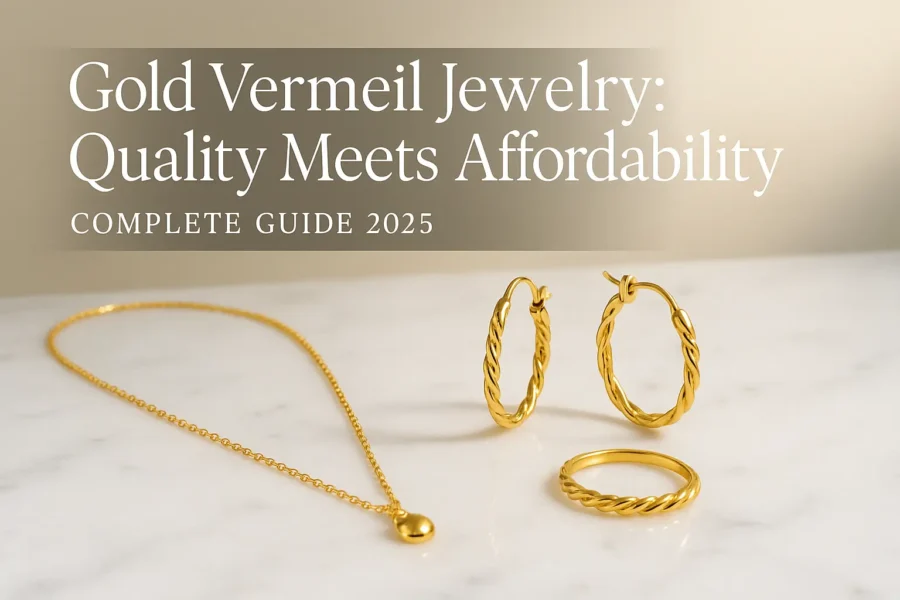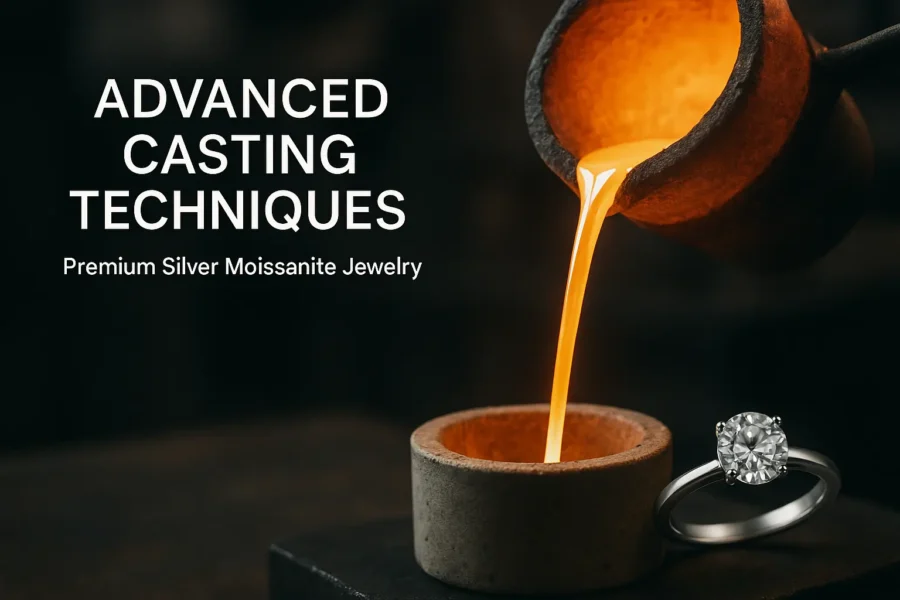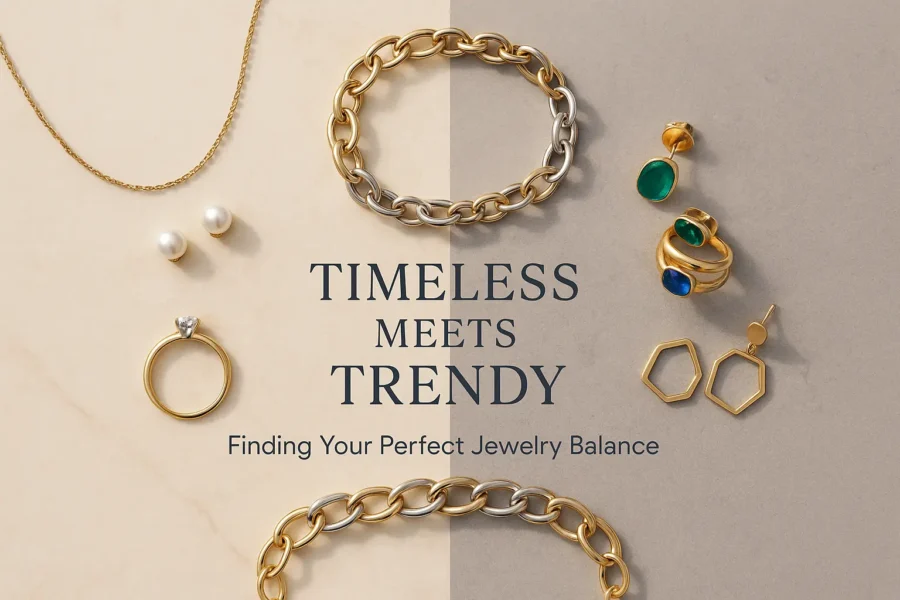The art of setting gemstones has evolved dramatically over centuries, yet the fundamental goal remains unchanged: to showcase a stone’s natural beauty while ensuring lasting security. For moissanite, with its exceptional brilliance and fire, the setting technique becomes even more critical. This unique gemstone demands a perfect balance between time-honored craftsmanship and cutting-edge precision to unlock its full optical potential.
Understanding how traditional and modern setting approaches complement each other helps jewelry professionals and enthusiasts make informed decisions about their moissanite pieces. Whether you’re creating custom engagement rings or developing wholesale jewelry lines, the choice of setting technique directly impacts both aesthetic appeal and long-term durability.
The Foundation: Understanding Moissanite’s Unique Properties
Moissanite possesses distinct characteristics that influence setting decisions. With a hardness of 9.25 on the Mohs scale and exceptional light refraction properties, this gemstone requires specific considerations during the setting process. Its higher refractive index than diamond means proper setting angles become crucial for optimal light performance.
Traditional jewelers quickly learned that moissanite’s thermal conductivity differs from other gemstones, affecting soldering temperatures and metalworking techniques. These physical properties shaped how setting methods evolved to accommodate this remarkable stone.

Traditional Setting Techniques: The Art of Hand Craftsmanship
The Classic Prong Setting Legacy
The prong setting remains the gold standard for showcasing moissanite’s brilliance. Traditional four-prong and six-prong configurations allow maximum light entry while providing secure stone retention. Master jewelers developed these techniques through generations of refinement, creating hand-forged prongs that perfectly cradle each stone.
Traditional prong work involves careful metal manipulation using basic tools: files, pliers, and burnishers. The process requires developing an intuitive feel for metal behavior and stone placement. Experienced craftspeople can create prongs that appear identical while accommodating slight variations in stone dimensions – a skill that takes years to master.
The beauty of traditional prong setting lies in its flexibility. Each piece becomes unique through subtle variations in prong positioning and finishing. This handcrafted approach creates character and authenticity that machine production cannot replicate.
Bezel Setting: Ancient Protection Methods
Bezel settings trace their origins to ancient metalworking traditions, where complete stone encirclement provided maximum protection. Traditional bezel work requires exceptional skill in metal forming and fitting. The process begins with creating a perfectly sized metal rim, then carefully pushing the metal over the stone’s edge using specialized tools.
Hand-pushing techniques developed over centuries create seamless, flowing bezels that appear effortless yet require considerable expertise. Traditional jewelers developed specific burnishing patterns and pressure applications that ensure even metal distribution without stone damage.
For moissanite, traditional bezel techniques offer particular advantages. The complete metal surround protects the stone’s delicate edges while creating a sophisticated, understated appearance. Many vintage-inspired designs rely on these time-tested bezel methods to achieve authentic period aesthetics.
Master Craftsman Foundations
Traditional metalworking forms the backbone of all quality setting work. Hand-forming techniques, precise soldering, and careful finishing create the foundation upon which all other setting methods build. These skills require years of apprenticeship and continuous practice to achieve mastery.
The traditional approach emphasizes understanding material behavior, developing hand-eye coordination, and cultivating an aesthetic sense that cannot be programmed or automated. These human elements remain essential even in today’s technology-driven environment.

Modern Precision: Technology-Driven Excellence
The CAD/CAM Revolution
Computer-aided design has transformed jewelry manufacturing, bringing unprecedented precision to moissanite setting. CAD software allows designers to create exact stone seats, calculate optimal prong dimensions, and visualize complex setting arrangements before physical production begins.
Modern CAD systems can account for moissanite’s specific properties, automatically adjusting setting parameters for different stone cuts and sizes. This precision eliminates much of the guesswork traditional methods required, resulting in more consistent outcomes and reduced material waste.
3D modeling capabilities enable designers to experiment with complex geometries impossible to achieve through traditional hand methods. Intricate pavé settings, complex channel arrangements, and innovative tension settings become achievable through computer-controlled manufacturing.
Advanced Manufacturing Integration
CNC machining brings industrial precision to jewelry production. Computer-controlled mills can create setting seats with tolerances measured in fractions of millimeters, ensuring perfect stone fit every time. This precision particularly benefits moissanite setting, where exact angles maximize light performance.
3D printing technology enables rapid prototyping and production of complex setting structures. Metal printers can create intricate setting arrangements that would require hours of hand fabrication in mere minutes. This technology proves especially valuable for custom designs and small-batch production.
Quality control systems using digital measurement tools ensure every setting meets exact specifications. Microscopic cameras and precision measurement systems can detect variations invisible to the human eye, maintaining consistency across large production runs.
Specialized Moissanite Applications
Modern technology enables setting techniques specifically optimized for moissanite’s properties. Computer calculations can determine optimal prong angles to maximize light return, while precision manufacturing ensures these angles remain consistent across multiple pieces.
Micro-setting applications, once requiring extraordinary hand skill, become achievable through computer-controlled tools. Pavé and channel settings can accommodate dozens of small moissanites with perfect alignment and consistent spacing.
Advanced techniques like tension settings rely entirely on precise calculations and manufacturing tolerances impossible to achieve through traditional methods alone. These innovative approaches showcase moissanite in ways previously unimaginable.

The Perfect Synthesis: Combining Tradition with Innovation
Hybrid Workshop Approaches
The most successful modern jewelry operations combine traditional craftsmanship with technological precision. CAD design creates the blueprint, but skilled craftspeople provide the finishing touches that distinguish exceptional jewelry from merely adequate production.
This hybrid approach allows manufacturers to achieve the consistency and efficiency of modern production while maintaining the character and quality associated with handcrafted jewelry. Each piece receives individual attention while benefiting from precise initial preparation.
Many manufacturers use technology for initial forming and sizing, then employ traditional hand-finishing techniques for final details. This combination optimizes both efficiency and quality, creating products that satisfy demanding customers while maintaining viable production costs.
Quality Advantages of Integration
Combining traditional skills with modern precision creates quality advantages neither approach achieves alone. Computer precision ensures perfect initial fit, while craftsman skill provides the subtle adjustments that create truly exceptional pieces.
Durability improves significantly when precise manufacturing creates optimal stone seats that craftspeople then perfect through traditional finishing techniques. This two-stage approach maximizes both security and aesthetic appeal.
The integration approach reduces waste and improves consistency while preserving the human elements that distinguish fine jewelry from mass production. Customers receive pieces that demonstrate both technical excellence and artistic sensibility.

Industry Leadership: Minye Jewelry’s Manufacturing Excellence
At Minye Jewelry, this synthesis of traditional craftsmanship and modern precision drives every aspect of production. The company’s approach demonstrates how contemporary manufacturing can honor traditional jewelry-making values while achieving the scale and consistency modern markets demand.
Minye’s production process begins with advanced CAD design, ensuring optimal settings for each moissanite’s specific characteristics. Computer-controlled manufacturing creates precise initial forms, which skilled craftspeople then refine using traditional hand techniques. This combination delivers consistent quality while maintaining the subtle variations that distinguish handcrafted jewelry.
The company’s commitment to both innovation and tradition enables them to serve wholesale partners with products that meet contemporary quality standards while preserving the aesthetic character customers expect from fine moissanite jewelry. Each piece reflects the perfect balance between efficiency and craftsmanship.
Selecting the Right Approach for Your Project
Design and Aesthetic Considerations
Choosing between traditional and modern setting approaches depends largely on the desired aesthetic outcome. Classic designs often benefit from traditional hand-crafted elements that provide authentic period character. Contemporary designs may require modern precision to achieve clean lines and perfect proportions.
Stone shape and cut significantly influence setting technique selection. Round brilliant moissanites showcase beautifully in traditional prong settings, while fancy cuts may require computer-calculated settings to optimize their unique light patterns.
The intended style – vintage, contemporary, or avant-garde – often dictates the most appropriate approach. Understanding these aesthetic relationships helps ensure the final piece achieves its design goals.

Practical Manufacturing Decisions
Production volume significantly influences technique selection. Individual custom pieces may justify traditional hand methods, while larger production runs benefit from the consistency and efficiency of modern approaches.
Budget considerations also play a role in technique selection. Traditional hand work requires more time and skilled labor, while modern methods may require significant initial investment in equipment and software.
Timeline requirements often determine the practical approach. Traditional methods require more production time, while modern techniques can accelerate certain phases of the manufacturing process.
Quality and Durability Factors
Long-term durability depends on both initial precision and finishing quality. Modern manufacturing excels at creating optimal initial conditions, while traditional finishing techniques ensure lasting performance under daily wear conditions.
The intended use environment influences setting choice. Engagement rings requiring maximum security may benefit from computer-calculated strength optimization, while fashion pieces may prioritize aesthetic considerations.
Customer expectations regarding both appearance and performance help determine the most appropriate combination of traditional and modern techniques for each specific application.
Future Directions in Moissanite Setting
Emerging Manufacturing Technologies
New manufacturing technologies continue expanding the possibilities for moissanite setting. Advanced 3D printing methods enable increasingly complex geometries, while improved CAD software provides better optimization tools for light performance.
Artificial intelligence applications are beginning to influence design optimization, potentially enabling automatic setting configurations that maximize each stone’s individual characteristics. These developments may further enhance the precision possible in moissanite setting.
Micro-manufacturing techniques continue improving, enabling setting applications for increasingly small moissanites while maintaining security and optimal light performance.

The Enduring Value of Human Skill
Despite technological advances, human craftsmanship remains essential for achieving the highest quality results. The subtle adjustments, artistic sensibility, and problem-solving capabilities that skilled craftspeople provide cannot be fully automated.
The most successful future approaches will likely continue combining technological precision with human skill, each contributing their unique strengths to the final product. This partnership enables both efficiency and artistry in moissanite setting.
Traditional skills provide the foundation for understanding materials, techniques, and quality standards that inform even the most advanced manufacturing approaches. Preserving and developing these skills remains crucial for industry advancement.
Conclusion: Mastering the Balance
The art of moissanite setting represents a perfect example of how traditional craftsmanship and modern precision can enhance rather than replace each other. The best contemporary jewelry combines the consistency and capabilities of modern technology with the skill and sensibility of traditional craftsmanship.
Understanding both approaches – their strengths, limitations, and optimal applications – enables jewelry professionals to make informed decisions that serve their specific needs and goals. Whether creating individual custom pieces or developing wholesale product lines, the ability to leverage both traditional and modern techniques provides maximum flexibility and capability.
The future of moissanite setting lies not in choosing between old and new methods, but in thoughtfully combining them to achieve results neither could accomplish alone. This synthesis creates opportunities for innovation while honoring the rich traditions that define fine jewelry craftsmanship.
As the jewelry industry continues evolving, the companies and craftspeople who successfully integrate traditional skills with modern capabilities will be best positioned to meet changing market demands while maintaining the quality and character that distinguish exceptional moissanite jewelry.






